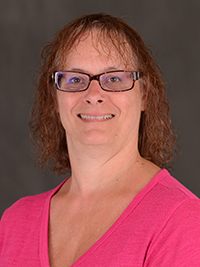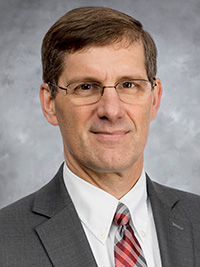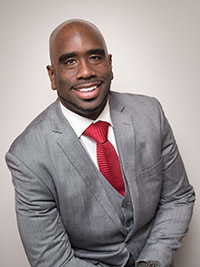How to meet your patients’ communication preferences and improve your bottom line
Insights from an HFMA executive roundtable reveal the importance of offering multiple engagement channels to meet a wide range of patient expectations.
Healthcare consumers increasingly prefer financial communications in digital format rather than paper, but this is not the time for a “one-size fits all” approach. A survey conducted in the spring of 2022 by Salucro Healthcare Solutions found that 56% of respondents prefer digital billing communications, like email or text, while 39% prefer paper statements.[1] A small but growing group of patients —13% of survey respondents — said they would prefer text messaging as their primary billing notification.
These preferences suggest that some provider organizations are not meeting their patients’ expectations. “We know that about 60% to 65% of providers haven’t adopted electronic billing or any kind of electronic communication and engagement with patients,” said Caleb Varoga, senior director of marketing for Salucro.
Survey respondents say that frequent, consistent and personalized communication from healthcare providers is increasingly important. But their top priority for financial communications is the ability to choose the communication channel they wish to use.
In this HFMA executive roundtable, seven health system leaders share their efforts to effectively engage patients and the lessons they have learned along the way. Participants in the roundtable were organized by HFMA during the 2022 HFMA Annual Conference.
How do your patients want to receive and pay their bills?
Christopher Johnson: For many people, digital bill-pay is just an expectation. Just this summer, we are rolling out text-to-pay so patients will get notified by a click on their phone, and they can pay by phone right then.
Still, assuming that everybody wants the digital experience is an incorrect assumption.
Brenda McCormick: Being a children’s hospital, our patients’ families are in the younger generation, and they have grown up in a digital world, and our processes seem completely archaic to them. Calling in, even to schedule an appointment, is very archaic. They don’t want to wait on the phone, and they don’t want to talk on the phone.
Randall Gabel: To meet the patient where they are, the patient needs to make the choice. So when we send out a paper statement, we give information about all the ways to pay. We include the address of our website and how to pay online. We include the phone number and how to pay by phone.
When we closed everything down during COVID, the folks who wanted to pay the cashier in person had to use another option. So now, even though our facilities are all open, we no longer have the cashier option.
We recently implemented another change that was quite controversial when we started. We use Epic’s MyChart, which has a guest-pay option for those who are not MyChart users. We set it up so that the default setting is opting for no paper statement. Nobody gets a paper statement unless they go into MyChart and specifically request it. We found that many people who thought “I have to have a paper statement” realized they don’t really need one because it’s available in MyChart. For us, this has been very successful.
Lori Condo: My organization is in upstate New York, and the payer mix in our county is 80% Medicare and Medicaid. A large portion of the population is 60-plus in age, and most of them are not ready for digital bill-pay. We tried text messaging and many of our customers would not respond. They refused to click on the link to get their bill.
Our patients can pay online through MyChart, and the younger generation does like electronic billing. But some people don’t have cell phones or computers.
Do you want your billing communications to be an extension of your brand? And how do you handle collections?
Johnson: For billing pre-120 days, absolutely we want all patient communications branded as Atrium. Post-120 days, that bill is in collections with an external agency, and we step back from that. When patients call us about their bad debt accounts, our process is to refer the patient to the agency that is handling their account.
How does your organization handle payment plans and financial assistance determinations?
Johnson: All of our payment plans are outsourced to an external vendor because we have found more efficient uses of our internal resources. We prefer to chase insurance dollars where we can get a better return on our efforts.
We have connected our payment-plan vendor with our statement vendor to create a seamless process. Our payment-plan vendor provides the statement vendor with the list of people who have active accounts. And if the statement vendor sees that a patient has a balance on one account and a payment plan for another account, we can ask the patient if they want to add those charges to their payment plan.
If the payment plan becomes past-due, the payment-plan vendor works with the patient to address the issue. When the payment plan gets 90 days in arrears, that account comes back to us and goes into bad debt.
Sheldon Pink: We have the same exact process. The only difference is that our collections vendor does the statements as well, so they are not two different vendors.
We make sure that when a patient gets a bill, they are getting a bill they can trust. So, we typically have a 14- to 17-day hold before we send out a statement.
Sometimes you can find secondary insurance on the account for self-pay patients. Sometimes they are eligible for help under our financial assistance policy. From a presumptive-eligibility standpoint, does the patient qualify for charity? For Medicaid? All those options are exhausted from the information that we have before the patient gets a bill.
Arjun Bhatia: We have everything in-house at this point, so we don’t use an external payment plan vendor. We are definitely looking at paperless billing and we are also looking at how to use the Epic payment history scores and the propensity-to-pay scores to drive how we want to engage our patients.
What challenges do you find in your billing and payment processes?
McCormick: That is so key. At Children’s Minnesota, we have been moving to e-statements, which can be accessed on our portal. Sixty percent of our patient families have elected for e-statements, so that naturally directs their payment process through the portal. But it can be frustrating for families because many do not use our portal for all of their health communications given their primary care physician may be on a different system. The lack of integration of their health portals can make it more difficult for our families to figure out how to find the statement and make a payment. It requires many clicks, and it is not user- friendly. We have recently introduced a chat box for frequently asked questions pertaining to the portal.
For those who receive paper statements and want to pay by credit card, they do have to call into a customer service representative. This can be an extra step for our families, so we are emphasizing the opportunity to receive an e-statement.
Is your organization seeking pre-payment based on pre-service estimates so that money is collected before services are received?
We have done some focus groups on that because we thought that could be an option. And we heard really strongly from these focus groups: “No way. I appreciate knowing how much it might cost, but I’m not comfortable paying until we have actually received the service.”
Pink: We are absolutely not going to collect before service because, to be fair, those are estimates. In fact, regarding out-of-pocket estimates, I always try to limit the interactions with the patient as little as possible. That is because, if I give you an estimate and then the bill turns out to be different, the patient loses faith — especially if the final bill is lower, and we already took the money out of their pocket.
Johnson: I agree that patients don’t want to pay before service. But when we provide the estimate, we try to have a conversation about whether they are going to need a payment plan.
For an estimate of, say, $10,000, most people would say, “I don’t have that today, nor am I going to have that tomorrow.” So we tell them that a payment plan is available and, if they express interest, our front-end staff can flag the account. Then when it gets to the back end, we already know the person wants a payment plan and we don’t have to wait for them to call us to say, “Now I want to set up a payment plan.”
For co-pays, we use a very soft ask: “Blue Cross says you have a $350 ER copay. How would you like to pay that?” But when they say, “I wouldn’t,” we just move on.
What are your concerns about the move to a retail experience for healthcare services?
Gabel: My concern is that patients have to understand that they got a service, and they need to pay for it. You don’t go to the grocery store, pick up the groceries and say, “Just bill me.” We have tried to do collection after service. So after the patient sees the physician and goes to check out and schedule the next appointment, we say, “Let’s go ahead and take care of the cost of this service and prepay for the next.” And they are like, “No, bill me.” We have created a bad habit.
Bhatia: It’s on us. Patients want the Verizon or Amazon experience, and we will do that for you. But after we provided you the service, then “That’s okay if you don’t pay us right away.” So I agree, we have to change the culture.
What is your organization doing to make healthcare more of the retail experience that consumers want while meeting the needs of your organization? How expensive is it to meet this challenge?
McCormick: I can’t put a number on it, but it’s expensive. We have been looking at putting our entire patient access process, including the final billing component, together to improve patient satisfaction and our overall efficiency. We’re implementing digital solutions for appointment reminders, pre-service forms, digital check-in and digital payments.
On the other hand, there is likely to be a financial benefit from this investment. We know a number of statistics — for example, how long a patient waits on hold to schedule an appointment — that we need to improve. For example, if a patient is on hold for 30 minutes, there’s a cost. The patient’s family may choose not to wait and instead look for other options for their care.
Johnson: Moving to a more retail experience is expensive, but it will pay off. When Walmart started down the path of offering self-checkout, the friendly cashier at the cash register was always an option. Now Walmart has trained us to stand in line behind 10 other people to wait for self-checkout. Just think of all the labor costs they are saving.
In our case, we moved to a single statement — hospital and professional statement together — and we saved more than $700,000 in statement costs alone in one year. Also, every time we move a person to an electronic statement, we save a tremendous amount of money. And [for] the text-to-pay that we are rolling out now, we won’t ever send those patients a statement.
But I just feel strongly that we still have to recognize the patient population won’t adopt that quickly. And then we have to help them make that move.
What is your organization doing right now to improve your patient financial communications and payment processes?
McCormick: We had an outside billing organization that we brought in-house last year because we didn’t feel that we were providing the patient focus that we need. So right now, our main focus is standing up the technology to support the new billing office and implement enterprise-wide standard processes.
Johnson: Text-to-pay is going live for us just now. If the studies are right, and 30% of the people who get our texts adopt that as their bill-pay method, that will be a huge win for us. That will be monumental in the savings we will get from not sending statements and fielding phone calls.
Conclusion
As clearly established, a diverse patient audience can have a wide range of communication preferences, and providers need to offer multiple engagement channels in order to meet the patient where they are most likely to act. While healthcare providers may be at varying stages of their journeys in offering multiple patient financial engagement communication channels, most appear to agree that staying in tune to patient feedback, remaining flexible in their approach to collections and leveraging trusted vendor or technology partners are all paramount.
PANELISTS

LORI CONDO
Assistant controller for Orleans Community Health/Medina Memorial Hospital in Medina, New York

RANDALL GABEL
Senior director, revenue cycle for OhioHealth in Columbus, Ohio

BRENDA MCCORMICK
Senior vice president and CFO for Children’s Minnesota in Minneapolis, Minnesota

SHELDON PINK
Vice president of revenue cycle for Luminis Health in Annapolis, Maryland

CALEB VAROGA
Senior director of marketing for Salucro in Phoenix, Arizona
ARJUN BHATIA
Executive director, revenue cycle for Wellstar Health System in Sarasota, Florida
CHRISTOPHER JOHNSON
Vice president, revenue cycle management for Atrium Health in Charlotte, North Carolina
About Salucro
Salucro is a healthcare financial technology company exclusively focused on patient payments and billing. From online bill pay solutions to provider-facing payment integrations, the Salucro platform brings cohesive payment experiences to healthcare providers, patients, and third-party collection agencies. As a PCI DSS Level 1 Service Provider, Salucro belongs to an elite group of organizations worldwide that have earned HITRUST CSF Certified status, proving Salucro’s continued commitment to managing risk and improving payment security and compliance. To learn more visit salucro.com.
This published piece is provided solely for informational purposes. HFMA does not endorse the published material or warrant or guarantee its accuracy. The statements and opinions by participants are those of the participants and not those of HFMA. References to commercial manufacturers, vendors, products, or services that may appear do not constitute endorsements by HFMA.
[1]. “2022 Trends in Patient Payment Communications,” Salucro Healthcare Solutions.






